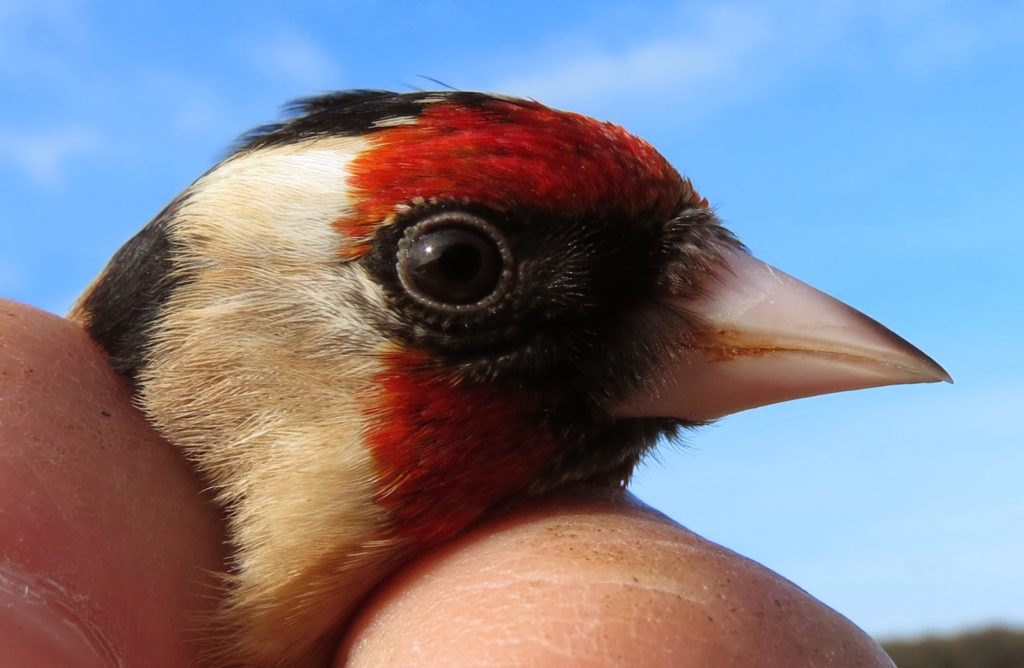Getting two weeks of ringing in a row has been difficult in 2014 to date due to the unsettled weather, but this week we managed it! A light south-westerly wind gradually increased over the morning, but despite this, and bright conditions making the nets more visible, it was a successful session, with 66 birds trapped.
 |
| Female goldfinch |
The breakdown was as follows: wren 1 (0), blue tit 13 (5), great tit 5 (2), chaffinch 2 (0), greenfinch 17 (2), goldfinch 18 (1), reed bunting 10 (2). Re-trapped (ringed) birds are indicated by the brackets.
The most welcome aspect of the session was that it was the first time since we started ringing at the site in March 2013 that the catch was dominated by finches. Despite establishing a winter feeding station in autumn 2013 and keeping this stocked with sunflower hearts, black sunflower and millet at least twice a week, only small numbers of finches had been trapped previously.
 |
| Adult male goldfinch |
As well as being very attractive, goldfinches are nice birds to catch as they can be aged and sexed (with a degree of caution) throughout the year. Males tend to show dark nasal hairs, red on the head that extends well behind the eye, relatively extensive red below the bill (8-10mm as opposed to 5-8mm in females), and limited brown in the lesser coverts (this feature is not listed in Svensson). Male wing lengths are often between 78 and 81mm, with females typically a few milometers shorter. None of these features is likely to be 100% reliable in isolation, but many birds shows several or all of them.
Ageing goldfinches involves looking for retained feather tracts. First winter birds sometimes have retained juvenile greater coverts, but more often have abraded, pointed tail feathers, frequently with brown tipping. Adults, such as the adult male to the right, tend to show more rounded tail feathers. Of the 18 birds trapped today, 13 were first winters, 4 fledged prior to 2013, and one was of unknown age (it was considered likely to be a first winter bird that had moulted extensively but this conclusion could not be reached with sufficient confidence for it to be aged so specifically).
Other welcome aspects of the session were the continued good numbers of reed buntings and the capture of what may be a ‘control’ great tit. A further 8 new reed buntings takes the annual total to 28 (only 36 new birds were trapped in 2013). ‘Controls’ are birds that are ringed at sites more than 5km distant from where they are recaptured. Great tits do not often move substantial distances, however, and this may actually point to the presence of a currently unknown local ringer!
Thanks to Heather Coates, Cedwyn Davies and Jessica Whitehead for their help this morning – particularly to Jessica for acting as scribe when we had a couple of relatively large rounds.
Owain Gabb
22/02/14
Reference. Svensson, L. (1992). Identification guide to European passerines. Privately Published, Stockholm.